|
   |
|
Page 4 |
Newsletter 135 Winter 2021 © Hampshire Mills Group |
|
Farfield Mill, Sedbergh
Ruth Andrews
Photos by Ruth and Keith Andrews |
|
The
restoration of Farfield Mill is another successful
venture, but this time largely undertaken as a
community project by an army of determined
volunteers. Its restoration is the subject of an
extremely well-written and inspiring book written by
Maureen Lamb and published in 2008 entitled The
Story of Farfield Mill Restoration.
|
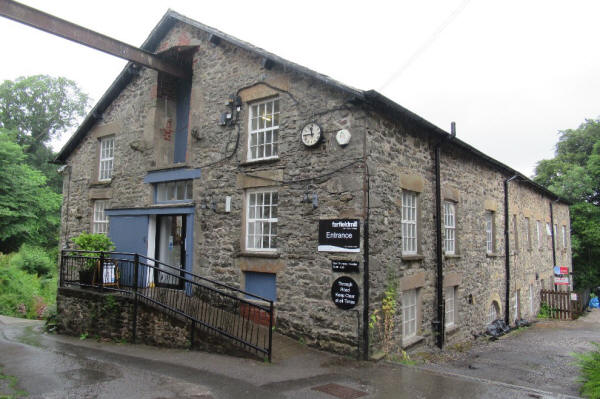 |
The first
mill at Farfield was built by Joseph Dover in 1837
for wool spinning and weaving. It is not of itself
much different from the hundreds of similar mills
which have not had such a determined band of
saviours. Before 1937 the mill was run by the Dover
family, but it was then sold.
|
|
Spinning
gradually declined, although it was also used for
storing wool and making cheese, as well as making
aircraft parts in the second world war. Between the
1960s and 1980s it had a revival when David Douglas
started weaving again under the name Pennine
Tweeds. He trained Bryan Hinton to use the
remaining Dobcross looms, and he subsequently took
over the business, but the end came in 1992 when he
gave it up. Soon after, a local resident visited
the mill to find Bryan about to dismantle the loom
for sale as scrap. A public meeting followed to see
if the mill could be saved, and the Sedbergh &
District Buildings Preservation Trust was formed.
Sedbergh in
Cumbria is the largest settlement within Yorkshire
Dales National Park but it is not a tourist
destination and its Dales Tourist Information Centre
had recorded fewer visitors than any other before it
closed in 2004. So the restoration of the mill was
an attempt to attract visitors and improve the
fortunes of the whole town. The project started in
1994 and the building was bought in 2000. It opened
to the public in 2001 as an arts, craft, and
heritage centre. That was the year of the foot and
mouth crisis; the local breed of sheep, Kendal
Rough Fell, were felt to be in danger of extinction
so the mill helped by buying about 1000 fleeces.
They set up a trust to provide post-graduate
weaver-designers with studios and the equipment to
weave a traditional heavy cloth called ‘ingrain’,
which it was hoped would become a high value niche
product.
When we
visited the mill post-Covid-19 it was just beginning
to recover from a forced period of stagnation. The
popular and successful café had not yet got back to
its full capacity and the entrance fee for the mill
was not being charged, but the shop was once again
in operation, and selling products made in the mill.
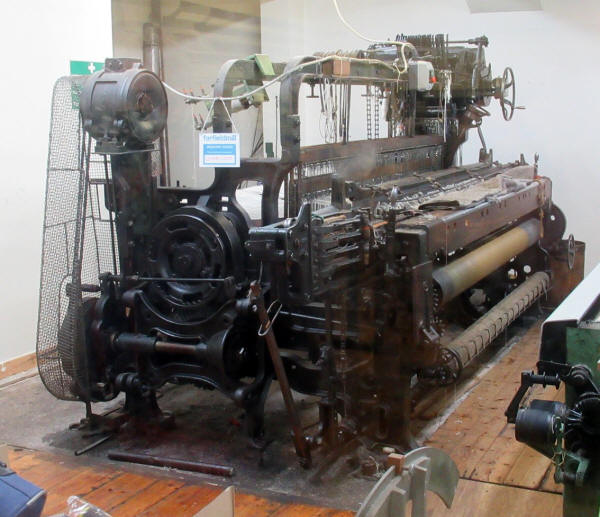
A separate
dustproof room houses the two automatic working
looms, one the 1936 Dobcross loom (above) made by
Hutchinson & Hollingworth of Diggle, Saddleworth,
the other an AC2 Somet loom from Italy bought in
2016 from a mill in the Scottish Borders, to work
alongside the Dobcross loom to speed up production.
Also on display is a Witney blanket loom (below).
Standing over 9ft high, it is a timber framed 4
heddle hand loom dating from 1702; a flying shuttle
was added around 1800, so it is an important
survival.
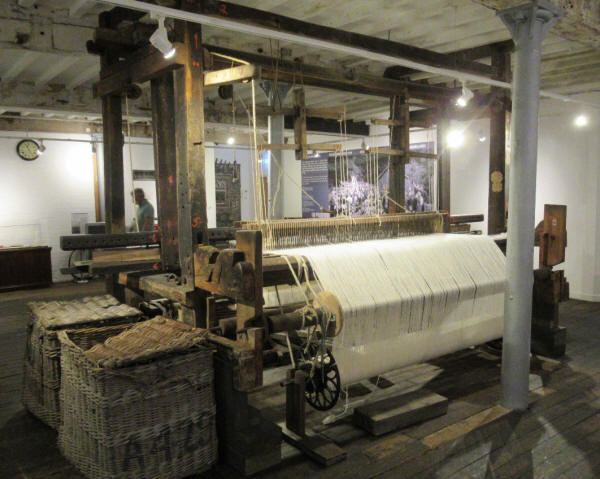
|
|
Around the
mill, there are several different types of
hand-operated modern looms (right) in use in the
studios.
In addition
to the textile studios, there are workshops which
accommodate various other design and craft artists,
whose products are on sale in the mill and the town.
|
 |
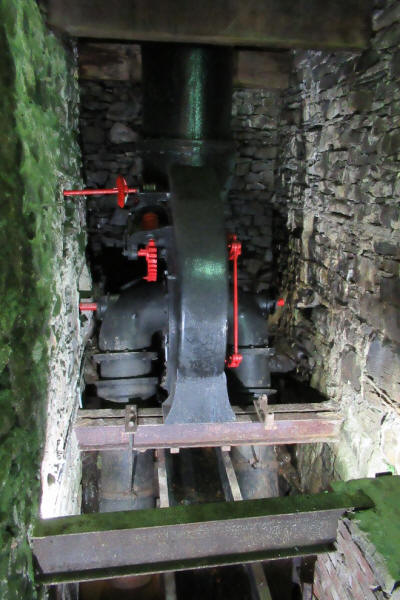
I didn’t
realise quite what a remarkable community effort had
been involved in the revival of the mill until I
read Maureen’s inspiring account of the hopes and
setbacks involved. It is a huge contrast to the way
that Gayle mill was funded and restored, and it
relies heavily on the mill earning its keep as a
working space, rather than just a museum.
Information from
www.farieldmill.org
and Maureen Lamb’s book. |
Finally I
should mention the Vortex turbine (left) with a fall
of 21ft, a suction of 14ft, and a rated power of
20hp (15Kw), supplied by Gilkes of Kendal in 1896,
which occupies the original wheelpit.
The whole
mill is built on a sloping site, so the front, seen
in the first picture, and the back (below) look very
different. The lower picture is an unrestored
warehouse on the site, which is awaiting reuse.

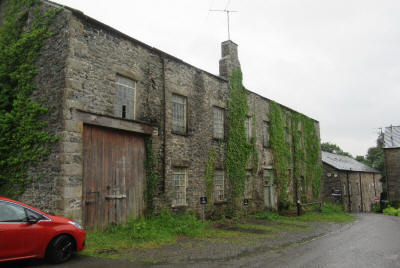 |
|
|
